Clinical Reasoning and the case of the fixed gear cyclist
by Martin Krause 2007

The examination
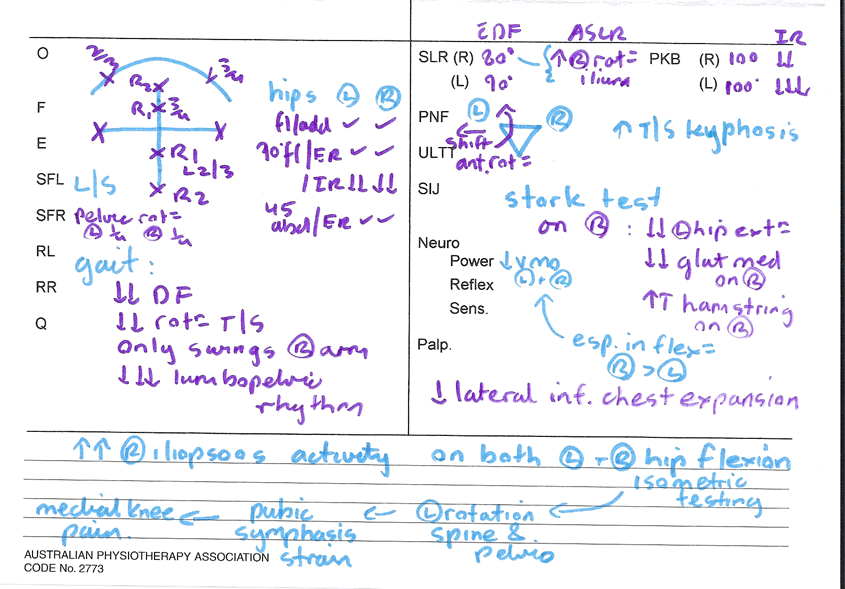
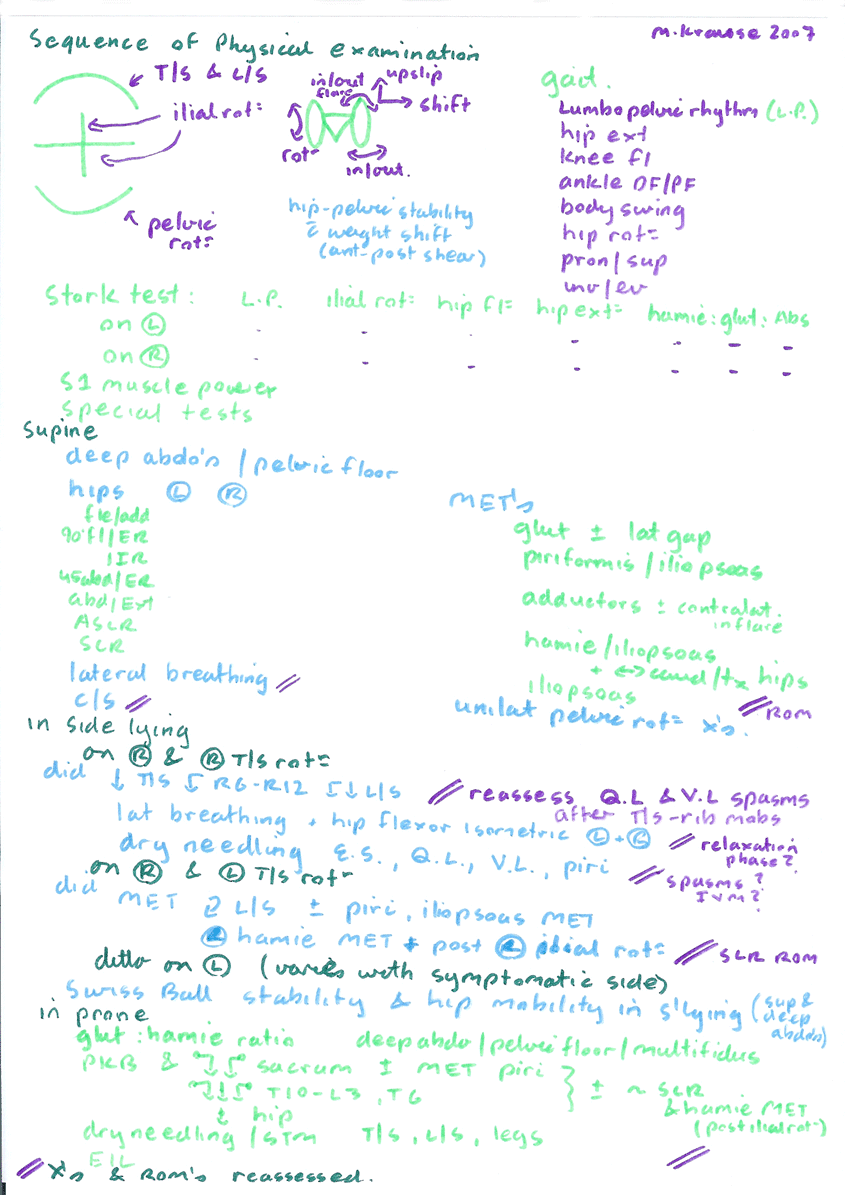

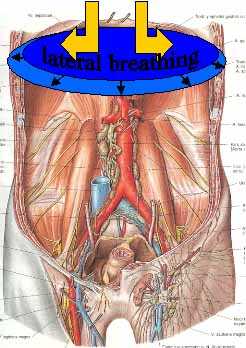
Lateral diaphragmatic breathing improves blood flow to and from the legs as well as enhances sympathetic nervous system function and blood oxygen-carbon dioxide exchange.
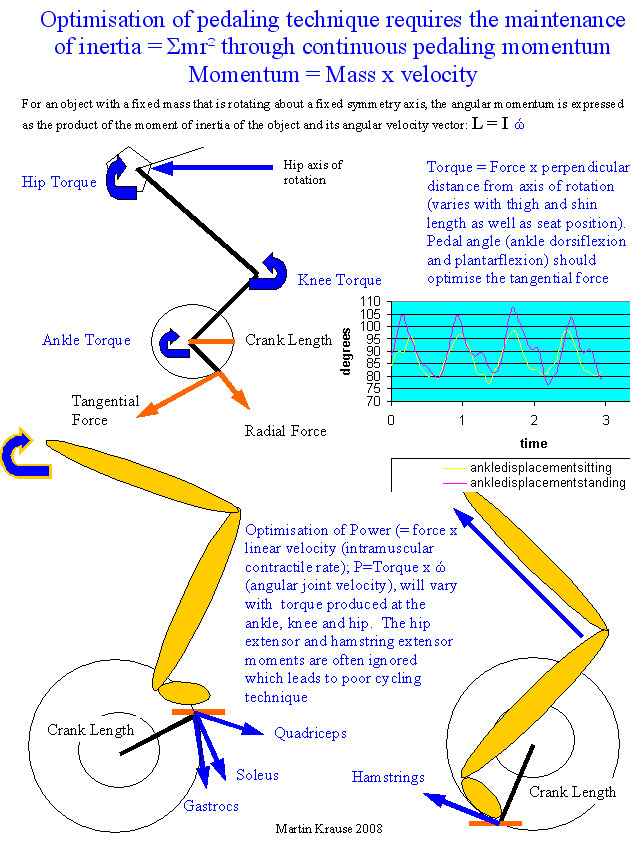
The Bike
The positioning on the bike is critical to comfort, power and optimal efficiency. Many myths exist as to what is the ideal position. Quite simply, the best position is the one that sounds best. When a person is positioned correctly on the bike, the pedaling action will sound very efficient - smooth spinning rather than stroking.
The frame : for women this can be a big issue. Smaller frames tend to have much steeper down tube angles making adjustments more critical. In my experience, bigger people tend to be on frames too big for them. Generally speaking, a frame that is too large results in the cyclist over-reaching and/or floating sideways over the bike. A frame which is too small results in anterior knee pain. However, smaller frames can have their seat height adjusted.
Are they in the correct position?
- Ideally, the cyclist should be able to place their hands comfortably on all 3 positions of the handle bars. Once they are in those positions, they should be able to easily lift their hands slightly off the handle bars. This is calle the "center of balance approach". If they cannot do this, then either they have reduced core strength or their seat is in the incorrect position or both. Remember when moving the seat forward, it rises on the rail and vice versa on the way back. The longer the torso the further back the seat can go. Importantly, the lung capacity should be reduced due to an over-arched back. Since 20 muscles are involved with breathing and 18 of these are postural muscles (Steve Hogg), these postural muscles need to be activated as minimally as possible without compromising stability. Additionally, if the cyclist is a toe dipper they tend to pull the body forward and hence the seat should be further back. Conversely, the heel dropper should have the seat further forward. Regardless, the seat positioning should make the arm load insignificant, thereby allowing those muscles to be used for comfortable and effective breathing. Hereby, energy and blood flow isn't wasted by going to muscles which are working 'over-time'.
There are three areas where bike adjustments are looked at
- the saddle - the less padding the better, wider and flatter seats for females, wear on the seat should be from the sitting bones. Seats which are too high result in posterior knee pain, seats which are too low result in anterior knee pain and sometimes groin pain, seats which are too far back and/or too high can result in lateral knee pain and even cause deep peroneal nerve injury. Ideally, the seat is just behind 'bottom center'.
- the pedal - a free floating pedals (free play cleat) tend to take away the need for critical adjustments. Generally the foot should be as far forward as the cleats allow. This latter aspect will depend on shoe size. By reducing the distance from the pedal to the ankle, it is thought that the need to stabilize the foot is reduced thereby allowing the muscles to concentrate their force for developing power.
- the handlebars and stem - the bend is critical as there should be enough space on the drops for bigger hands, and conversely smaller hands need the ability to correctly position brake levers for smaller fingers to reach the brakes when on the drops. Handlebars which are too low tend to place a lot of pressure on the genital area. Symptoms of too much perotineal pressure include rounding the back and keeping the pelvis upright. Stems which are too short or too long can overload the upper torso, arm and neck musculature.
Treatment
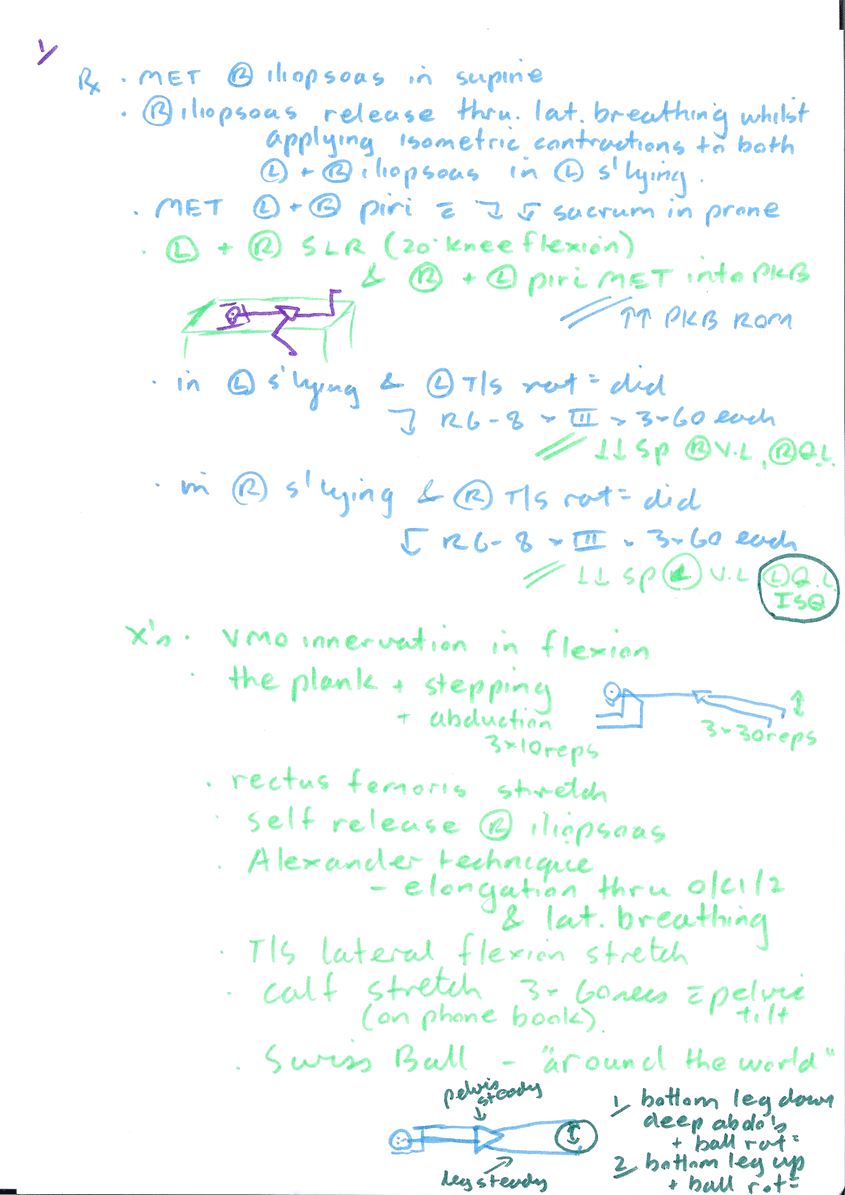
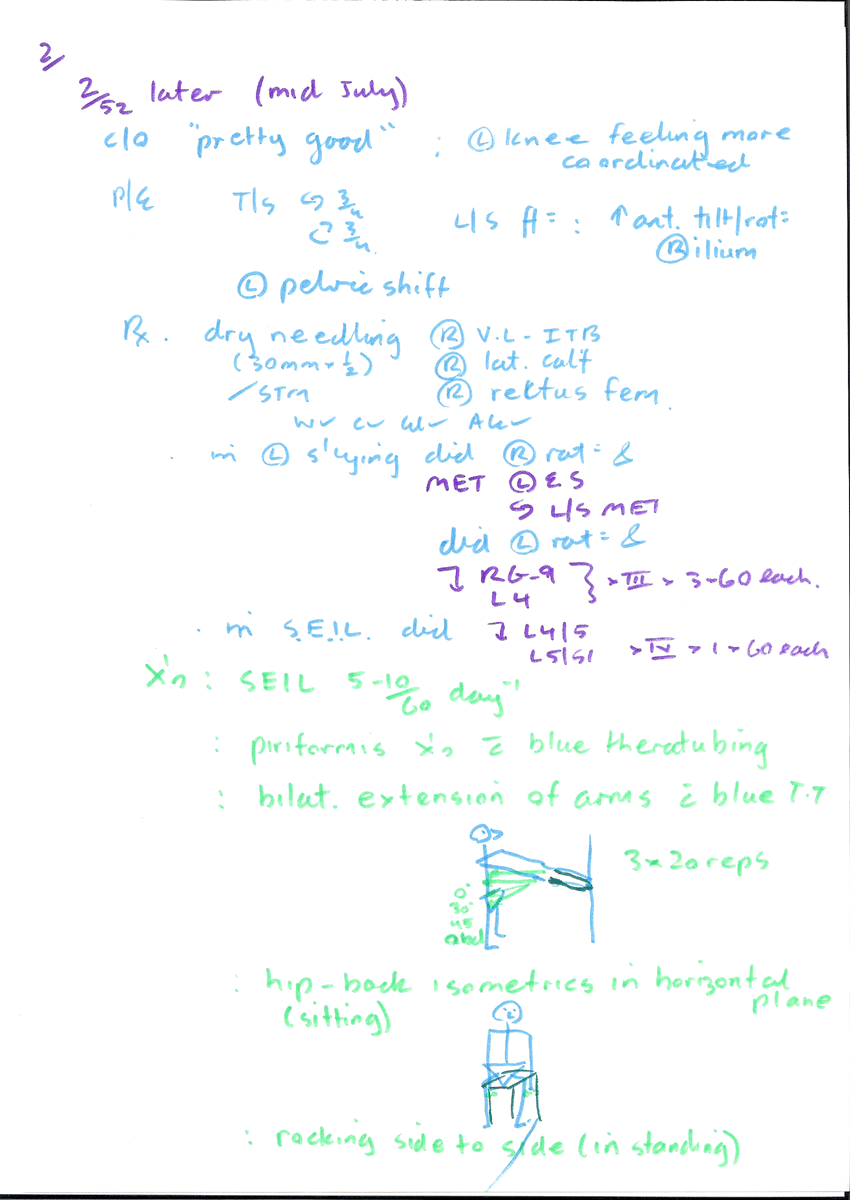
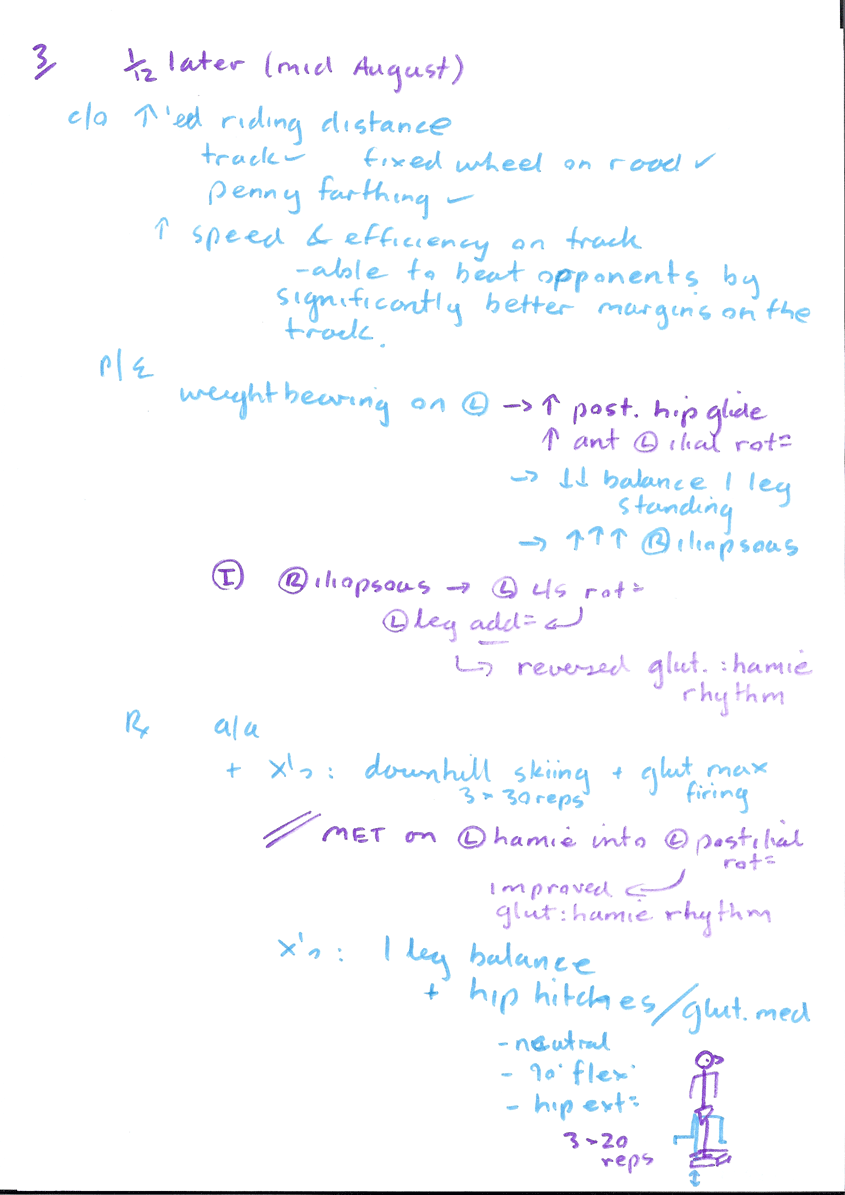
In this case, not only did the pain and motor dysfunction improve around the left knee, but his performance also improved on the track by 0.04secs over 200m from a standing start.
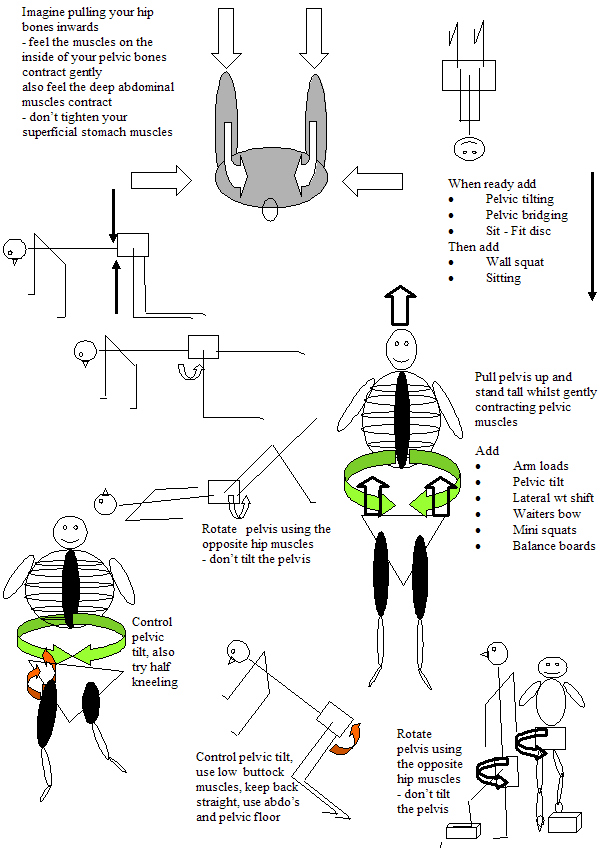
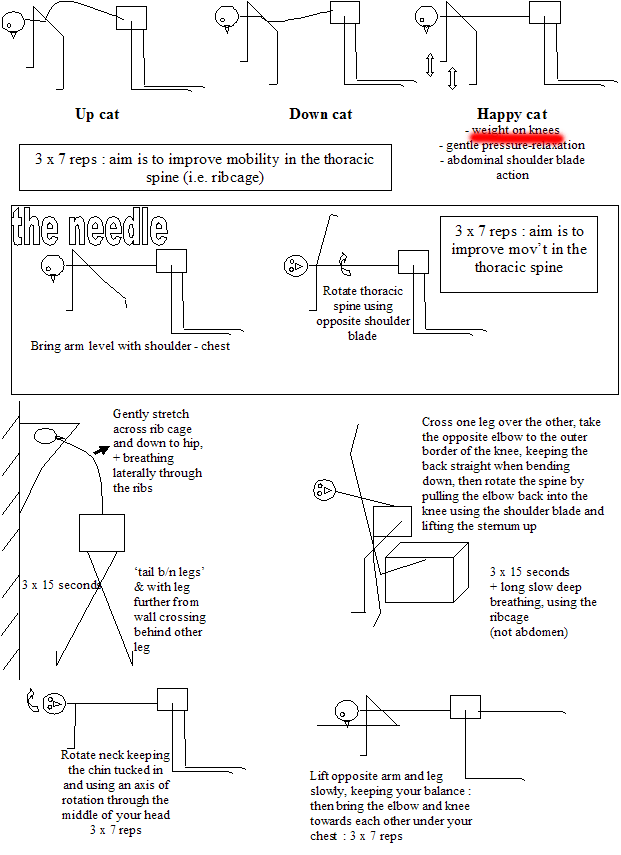
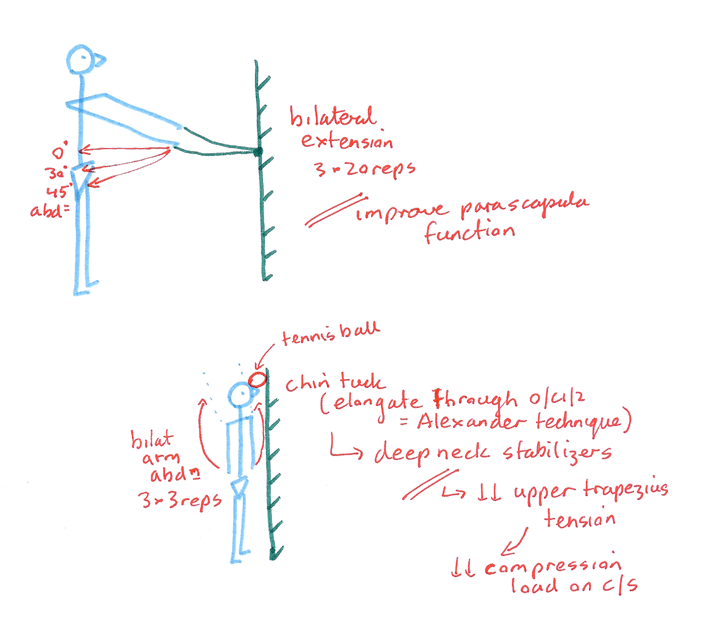
Deep neck flexor training and parascapula-post shoulder training was introduced to reduce upper trapezius tension, thereby reducing the compression loading on the cervical spine, as well as reducing adverse neural tension in the brachial plexus. Occulo-motor exercises were also introduced to improve cervical posturing whilst on the bike.

A model of everything : the neuromatrix is used as a model (cognitive process oriented structure) to describe the various input which the therapist can offer to 'enable' the client to engage in their path to recovery. Hereby, an evidence based approach using 'the values and beliefs' of the client is integrated with the scientific evidence base from physiotherapy, the pain sciences and psychology. Importantly, the therapist gains confidence through their success at predictive reasoning, whilst the client gains emotional confidence in their ability to undertake goal-oriented activities without the fear of exacerbation or under-performance.

Defining the 'cause of the cause' will get to the root of the problem. By deconstructing the problem clear and precise explanations can be given whereby the aims and objects of treatment commiserate the exercise goals
Cause & effect
Treatment is usually directed at the primary problem for which the client has presented. As the primary problem resolves the cause and effect of the injury must be taken into consideration if an holistic approach is to be considered. Low back pain would address issues of thoracic spine stiffness in rotation, lateral bending and inferior lateral chest expansion as these areas influence the lateral movement of the diaphragm during breathing. In turn this affects the use of the oblique stomach muscles, the transverse abdominus and psoas major. Furthermore, the ganglia of the sympathetic nervous system attach to the anterior aspect of the posterior ribs and their function is influenced by rib movement, which can potentially affect the control of muscle spasms and blood flow to the spine and lower limbs. Finally, deep slow lateral breathing reduces the risk of respiratory alkalosis and hence metabolic acidosis which can affect soft tissue integrity. Looking below the lumbar spine, addressing the pelvis and hips using joint mobilizations, soft tissue massage and muscle energy techniques would affect lumbo-pelvic rhythm. Muscle spasms can be addressed by reducing inflammation and/or relieving mechanical pressure on nerve fibres thereby decreasing ectopic impulse generation. Additionally, dry needling and soft tissue massage of the muscle fibres may also be employed. Exercise regimes to complement the specific impairment outcome measures should be integrated into functional exercises which resemble activities of daily living. Naturally, the clients motivational & emotional state needs to be monitored if a collaborative approach to recovery is to be obtained.

Explanations and References
Pins and Needles in the feet of a Cyclist
Manual Therapie in der Behandlung von Schmerzen (Deutsch)
Terapia Manual y dolor (Castellano)
Tratamento do dor e inflamacao com fisioterapia manipulativa (Portuguese)
Manual therapy in the treatment of pain and inflammation (English)
Exercise and the Immune System (English)
Exercise and Sarcopenia (English)
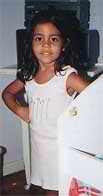
Examples of the assessment process for clinical reasoning
Beispiel von Klinisches Denken
Clinical Reasoning Exercise for low back and lower Limb
Clinical example of treatment for functional instability and radicular LBP
Clinical Reasoning Exercise for Neck-Upper Limb
Apresentacao Clinica e Perguntas
(RACIOCINIO CLINICO)
Presentation at the conference in Rome in October 2005
Publications:
-
Neurophysiological Effects of Traction, Rigaku ryohogaku (2000), 27,4, 128 (Japan)
-
Lumbar Spine Traction: Evaluation of effects and recommended application for treatment (2000), Manual Therapy, 5, 2, 72-81
-
Neurophysiological effects of Manual Therapy (1996), Kinesiologia, (Chile)
-
Neurophysiological considerations of SLR and ULTT (1998), Kinesiologia (Chile)
This email address is being protected from spambots. You need JavaScript enabled to view it.
Uploaded : 26 October 2007 Updated 25 May 2009

























































































































